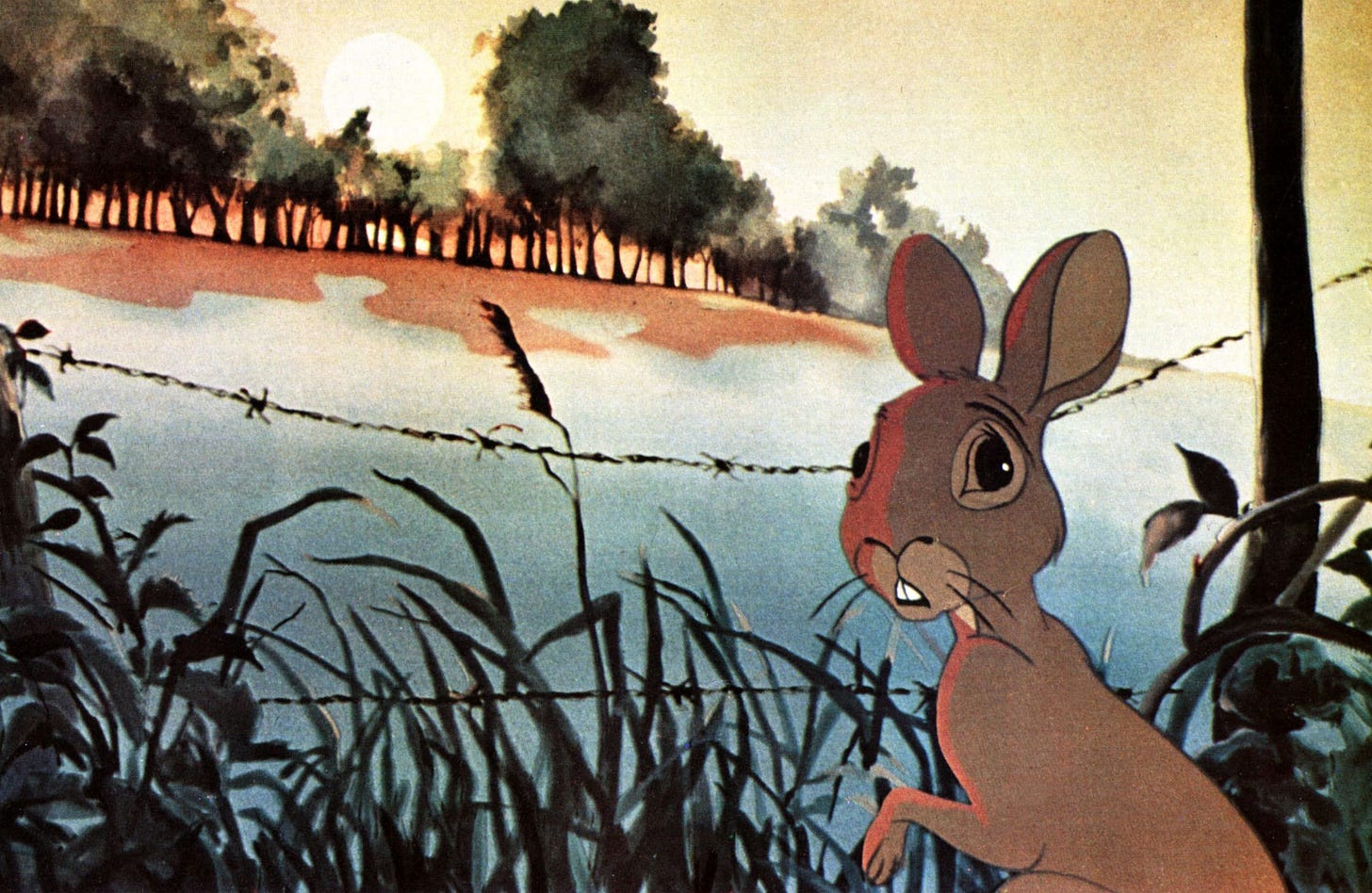Something to watch tonight: Thursday 14 November
Watership Down (Rosen, 1978)
I took the day off yesterday as I was in the studio recording and editing last night’s edition of At the Movies for RNZ. Apologies for any inconvenience, etc. You can listen to it here.
Watership Down is one of the seminal texts of my childhood – both Richard Adams’ book and Martin Rosen’s film version.
The book was published in 1972 (when I was about four) and was an instant hit. My mother read it to me over and over again, despite how emotional it made me every time. I think I must have read it three or four times myself when I was able, especially after the film came out.
It’s the story of a group of anthropomorphised English rabbits with a complex mythological belief system and social and political structures, yet despite that they are still clearly rabbits. It isn’t quite Animal Farm levels of allegory but it’s close.
Fiver is highly sensitised to the environment – possibly on a paranormal level – and he has a terrifying vision of human development destroying the rabbits’ warren (their village). With his older brother Hazel, Fiver attempts to warn the leadership of the danger but he is not taken seriously. The pair persuade a group of rabbits that they should leave before it is too late and that there is a hillside far away – Watership Down – where they can start their lives again.
During the exodus the group experiences many adventures, and they learn a lot about the dangers of the world before they can consider themselves safe. And, fair warning, not everyone makes it.
Producer (and eventual director) Michael Rosen was a literary agent who had dabbled in film but had never worked with animation before. After a falling out with the original director (the experienced American John Hubley), Rosen took over directing an equally green group of local animators. Unlike the huge Disney or Hanna-Barbera factories in California, there wasn’t a huge amount of animation done in the UK – mostly cheap television commercials or children’s television.
The look of the film is beautiful, however, with many of the locations drawn from the real places Adams had described in his book. But it is the casting that really elevates Watership Down. It features the voices of many of the finest actors of the era – Richard Briers was Fiver and John Hurt played Hazel. Watching it again last weekend, I realised that I could recognise many of the cast from their voices: Joss Ackland and Michael Hordern are always easy to pick, but also Denholm Elliott, Derek Griffiths and Rory Kinnear’s father Roy Kinnear (what a loss it was when he passed away so young).
There’s a more recent four-part adaptation of Watership Down – using CGI and with a similar aesthetic to the Peter Rabbit films – that you can watch on Netflix and that might be more palatable for modern kids than the beautiful hand-drawing of the 1978 film.
But that version doesn’t have the Art Garfunkel song, “Bright Eyes”, which was the first record I ever bought with my own pocket money. I think I still have that copy here somewhere. Yup, just checked and I sure do.
Where to watch Watership Down
Keep reading with a 7-day free trial
Subscribe to Funerals & Snakes to keep reading this post and get 7 days of free access to the full post archives.


